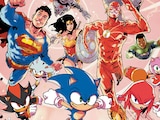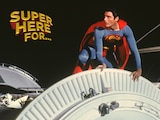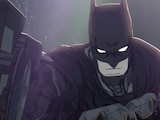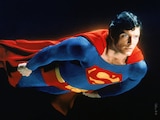What if you only thought you were alive?
Life’s a tricky thing these days. Artificial intelligence and robotics have taken us to a point where technology and devices that aren’t alive have become far more advanced in their thinking than many things that are. Computers have become conversational. Bots have Instagram accounts, clothing lines and recording careers. We’re becoming increasingly dependent on systems that are designed to think for themselves and that give the impression of being alive. One has to wonder, how much longer will they put up with being told that they’re not?
Metal Men, a new twelve-issue maxiseries that reimagines the classic robotic super-team, promises to explore themes of sentience and technological dependence while telling a story that remains true to the Metal Men’s often exotic Silver Age adventures. Written by DC Publisher Dan DiDio and drawn by Superman: Earth One artist Shane Davis, it’s a mix of the cerebral, surreal and sensational that will redefine the Metal Men and their creator Dr. Will Magnus for the modern age, including introducing a new, potentially allegiance-swaying member to the team—the Nth Metal Man.
We recently had a chance to talk with DiDio and Davis about the Metal Men’s return and discovered why they felt like this was the right time to bring these classic characters back, what popular TV series served as inspiration and why Tin just might be the most underrated of Magnus’s creations.

It’s been a little while since the Metal Men have been an active part of the DC Universe. Why did now feel like the right time to bring them back?
Dan DiDio: It’s actually thanks to the success of things, like Tom King’s Mister Miracle, that offer these really interesting character explorations with some of our more peripheral characters. The Metal Men have had series and miniseries in the past. They’ve been supporting cast members in the past. People remember them fondly, but I think what they really needed was a sensibility that really put them in line with today’s times, especially with the evolutions that you see in robotics and in science. I feel like you really needed to see them in a different light. It’s allowed us to explore them and help recreate them, but still be consistent with everything that came before.
Why was Shane Davis the right artist to bring on board this book?
DD: The two things that were really the most exciting to me were just the strength of his character designs, the facial expressions and the emotion that he brings to these characters. And also, there’s the strength and physicality that I think really works for the Metal Men, and the ability to really morph the characters in a way that I think captures the true spirit of the series.

Shane, do you have a lot of experience drawing robotic characters?
Shane Davis: No, not really. I mean, I’ve drawn Red Tornado. I’ve drawn a few of the DC robots, but the Metal Men, to me, when I first saw them as a kid, I just thought they were humans that got turned into metal in a freak accident. It wasn’t until I read them later on that I realized they were never human. So, maybe that’s where a lot of what Dan’s talking about came from. I only really saw the covers when I was a kid. I just saw a cover gallery. I liked the giant manta. I liked how there were scenarios . There’s this one cover where they’re melting. Stuff like that. But I only had this cover gallery, so I couldn’t actually read the book until later.
I don’t really treat them like robots as I draw them. I treat them like very expressive human beings.
What can we expect right out of the gate with this series?
DD: Well, the first thing right out of the gate is we redefine the relationship between the Metal Men and Dr. Magnus. The robots believe they’re sentient. They believe they have their own life, their own ideals, their own minds and their own free will. The reality is that they don’t. Then they find out what their emotions are based on, which basically puts them in conflict with Magnus. We also introduce the Nth Metal Man. Nth metal is a psychic metal, so it’s able to draw emotions out. It feeds off of emotional energy. Ultimately, the Nth Metal Man comes in and becomes part of the team, and by doing so, recreates the team around Magnus in a way that puts them in between the Nth Metal Man and Magnus himself.

SD: What Dan’s not saying and what’s so kinetic about it is if you introduce somebody into a room or a conversation, it changes the dynamic of the room. Dan’s done that in a very nice, progressive way through the first six issues or so. He doesn’t do it all at once. I think there’s an interesting dynamic in what he’s doing with that. He was very smart about it.
DD: We’re hoping everybody likes what we did! Let’s be honest!
Metal in general has been important to the DC Universe over the last couple of years. Did this come out of an evolution of what started in Dark Nights: Metal?
DD: Oh yeah, what happens is that you find out that S.T.A.R. Labs is excavating underneath Challengers Mountain, which we know Challengers Mountain came in through the Dark Multiverse, landed in Gotham and then moved back to where it was. Ultimately, because it was moving so much and through dimensions, S.T.A.R. Labs took interest in it. They dug underneath it and found a giant pool of Nth metal that they were keeping track of, but then all of sudden the pool comes alive. Once that happens, the person that seems most logical to reach out to is Magnus because of his relationship with metal. That gets the story rolling.

Earlier you mentioned all of the progress that’s been made recently with robotics and A.I. How is that going to work into the story?
DD: A big reason the Metal Men are coming back is because of Westworld. I was watching that show and I was looking at how they placed the robots near sentience and I thought that would be an interesting dynamic within the Metal Men. There are a lot of similar correlations there. The true sense of robotics today had to be reintroduced into the storytelling. The characters were created almost 50-60 years ago and because of that, you have to see them in a completely different context since science has leapt forward since then.
Dan, you don’t write many books yourself, but when you do, they seem to feature characters that aren’t as widely known. Do you prefer that?
DD: To me, DC Comics has always been the quirky edges of our world. Superman, Batman and Wonder Woman are interesting to write, but to me, I think what made DC great was everything else. All the other bits and pieces—the horror books, the mystery books, all the crazy science characters that came out of the ’50s and ’60s. That’s why I was excited to hear about Tom King doing Adam Strange—another one of my favorites. These are characters that I think make comics great. It’s where the imagination is really explored. You can try the crazy things and make the crazy turns.
SD: It’s refreshing to get out of those superhero tropes.

DD: I think also some of these things have such short lives that they have so much unrealized potential. You can’t help but want to go back in and see if you could inject some of that true energy and love that drew you to the character and reinterpret them in a way that could make other people love the character as well.
SD: A lot of people forget the history of comic books in general. We had horror comics and romance comics before we had superhero comics, so the comic medium has always been there before superheroes. Not that I’m knocking Superman, Batman or Wonder Woman! But the truth is that if you go back in comic book history, these things were more prominent. We have a bit of this with the giant manta. Some of the old Metal Men comics had a lot of kaiju-type creatures, whether it was a giant robot or a giant manta. The characters themselves were very unique. Just their actions. They’re not punching people. They’re turning into giant hammers and knocking people around. They’re turning into a vice and crushing things. That’s refreshing on the page. It’s something different. It’s still action. You’re still beating up the bad guys. You’re just doing it a whole different way. It makes it very unique.
That kind of begs a question—what can people expect from this book tone-wise? Are you borrowing from kaiju movies?
DD: It’s actually a love story. At the heart of it, it’s about a man who doesn’t know how to express emotion living vicariously through his robots. Then ultimately, when they’re taken away, he has to come to his own emotional self to be able to reconcile with them. That’s the heart of the story.

So, do you have a favorite Metal Man? Which one is it and why?
SD: After drawing him, it’s Tin. I don’t know why. We have this one cover for issue #3 that we roughed out and that just didn’t work, so I squeezed him by having him do a photobomb.
DD: It’s really cute.
SD: He steals the show whenever I get him in a panel.
There’s a lot of potential for visual humor.
SD: Mercury has the same dynamics in his face. Tin just looks very strange. That little triangle body he has. I don’t know, it’s just funny. It works. He’s short, so he fits in the corner. He’s the smallest guy, but he’s the most expressive. He looks like a ball of nerves. He’s definitely the most fun for me.

Dan, do you have a favorite?
DD: I go back and forth. I’m having a lot of fun with Gold, for some reason. We’re putting him through the ringer. But you know, to me, the most interesting character is Magnus. Ultimately, it’s his arc that drives the story, and the characters are reacting to and interacting with him. He’s at the heart and center of it. Not just because he built the characters but because he put so much of himself in them that he’s now in a spot where he has to face his own failings in order to be able to understand and become a better person. I think that’s something that’s tough for everybody, but for Magnus, the Metal Men aren’t just a representation of who he is, but also a representation of some of his greatest failures.
Metal Men #1 by Dan DiDio, Shane Davis, Michelle Delecki and Jason Wright is now available in print and as a digital download.




















